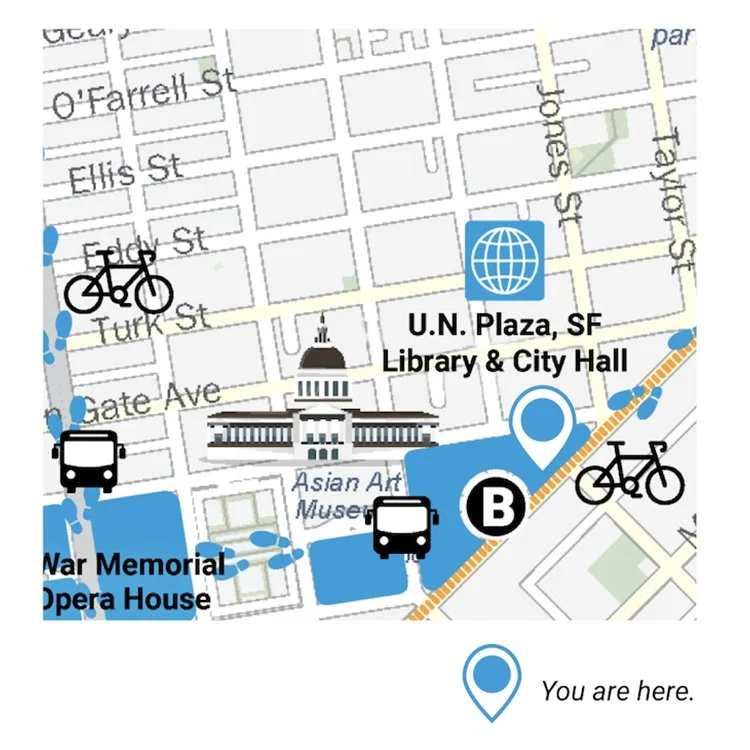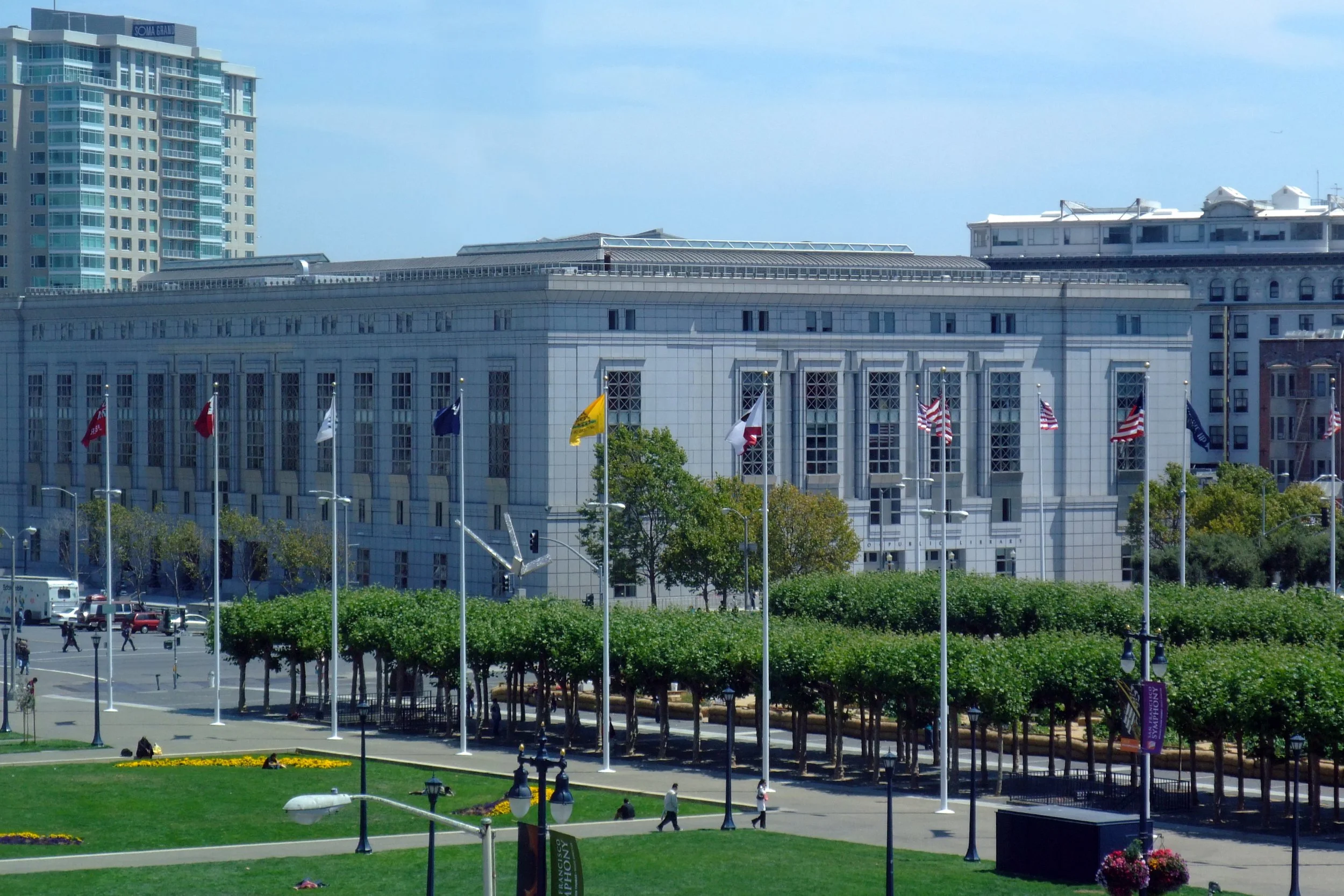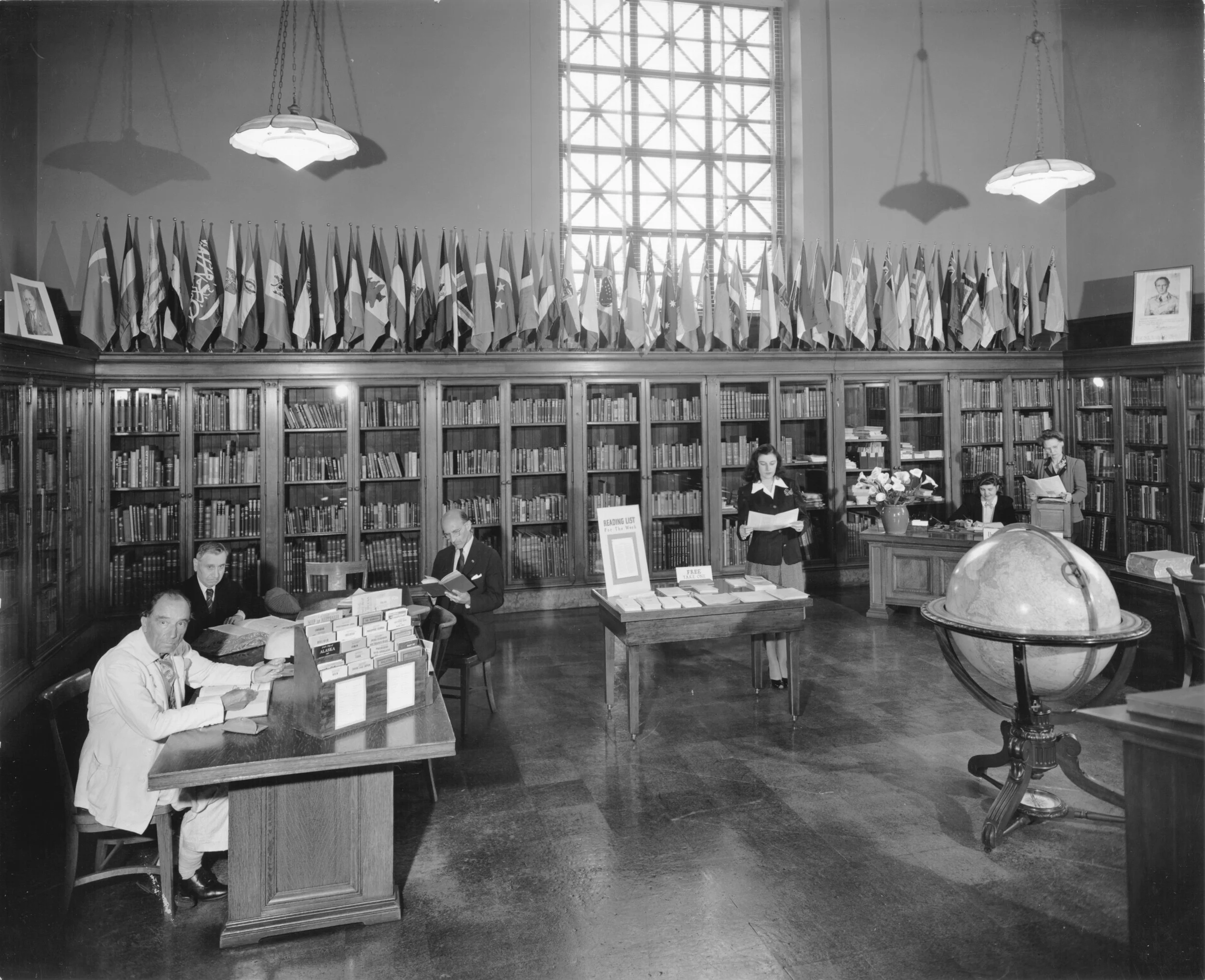
20 min
APPROX
DURATION
“U.N. PLAZA, SF LIBRARY
& CITY HALL.”
You have reached a major cultural and historical center of the city: the United Nations Plaza. Below your feet is where history gets made and celebrated.
Stepping into the U.N. Plaza means stepping into a celebration of history. You’re standing in the center of San Francisco, birthplace of the United Nations. As you look around, you will realize you’re surrounded by symbols of the U.N. 50 years ago in 1975, this very plaza was unveiled and dedicated for the 30th anniversary of the U.N. Charter signing. It has been constantly evolving since. At this stop, you will see a variety of features that have been added throughout the years. From the “Walk of Great Ideas,” to the big U.N. emblem, to even a skate park, the U.N. Plaza represents community on both the local and international levels.
What began as a plaza and fountain designed by architects Larence Halprin, Mario Ciampi, and John Carl Warnecke, has grown into a living, breathing monument. This growth also makes it difficult to know where to begin. It’s best to start with the fountain, near the Market Street side entrance to the plaza. This fountain was built alongside the original plaza. Granite slabs in the fountain are meant to represent the continents of Earth. A central block, the lowest one, symbolizes a mythical lost continent. Originally, the fountain was designed to flood and drain the basin on a 2-minute cycle to honor the ocean tides.
Look down at the stone beneath your feet. Near the fountain, two long lines of granite inlaid with brass are intersecting. This marks the spot of the old City Hall. It also was the geographic “center” of San Francisco, which would be used to measure the distance between SF and other places.
The last highlight to note here is the black obelisk next to the fountain. It has the preamble to the Universal Declaration of Human Rights on it.
Take a look at the white rectangle stones leading to the seal. This is called the “Walk of Great Ideas” and the stones have the preamble to the U.N. Charter carved in them. It was one of the first additions to the plaza since its opening, added in 1995 for the 50th anniversary. Let curiosity take over and explore what looks interesting to you next. Maybe investigate the lamp posts, which have member nations inscribed on them. Or maybe you’ll take a moment to watch the skaters. Either way, the U.N. Plaza is a great place to explore.
Walk forward through U.N. Plaza, then cross Hyde Street. You will find yourself in another plaza. In this open area since 1981, a farmers market opens up here on Sundays and Wednesdays. It’s fittingly called the Heart-of-the-City Farmers Market.
From here, face City Hall and look to the left. This is the San Francisco Public Library. On the sixth floor, there’s a special section called the San Francisco History Center.
Listen to Christina Moretta, Photo Curator of the SF Public Library, speak about the library’s unexpected history with the U.N. in the video below.
The San Francisco History Center is full of important historical documents, including an exact copy of the U.N. Charter.
But back during the 1945 United Nations Conference, the library was in a different building, and it played a special role. In what is now the Asian Art Museum, there was a private room just for attending delegates to use—all 850 of them. They even had their own special library cards.
Inside the private room set up for the delegates at the old library. Photo use courtesy of the SF History Center.
Every day, delegates could find their favorite newspapers here. According to Christina Moretta, there was a special red phone they could use to quickly ask reference questions. It acted as a direct line between the War Memorial Opera House and the delegates’ library room. While none of us can get that treatment, the library is still always worth a visit.
Now, walk up to Larkin Street and look ahead to City Hall. The 70th anniversary of the U.N. was celebrated at City Hall on June 26th, 2015. The inside is open to the public during the week, so make sure to stop by if you get the chance. This building was first completed in 1916, and it’s beautiful. The architect, Arthur Brown Jr., also designed the War Memorial Opera House and Veterans Building—two of the other stops on this tour. At 307 feet 6 inches, City Hall’s dome is 42 feet taller than the one on the nation’s capitol building, where Congress is.
The U.N. Plaza is not only the heartbeat of the city, but also the heartbeat of the future. When you are done exploring the Civic Center area, it is time to go to the next stop. If today is a weekday and you’re headed to the War Memorial Opera House next, you can walk right through City Hall to get there!
made possible with support of the following partnerships for the goals (SDG 17):


















